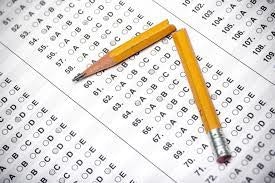The COVID-19 pandemic upended the college admissions process, with many schools deciding to temporarily eliminate requirements that students submit standardized test scores. Colleges and universities found themselves conducting an impromptu experiment with test-optional admissions, a policy long called for by those who say that the SAT and ACT unfairly disadvantage students from under-represented minority groups. Now, after two years of wide-spread test-optional admissions, data is beginning to emerge, and it shows that these policies have been an important aspect of admissions decision-making for minority students.
An EAB survey of almost 5,000 students who graduated high school in 2021 has found that test-optional policies were a significant factor in motivating students to apply, with 15% saying that they applied to a college specifically because it was test-optional. But test-optional policies were particularly influential for under-represented minorities, with 24% of Black students and 21% of Hispanic/Latinx students saying that they had applied to a school for that reason. Whites and Asians applied because of test-optional policies at much lower rates, 12% and 15%, respectively.
According to Madeleine Rhyneer, vice president of consulting services and dean of enrollment management for EAB, which consults with colleges on enrollment management, going test-optional broadcasts an appealing message to students from under-represented groups.
“I think that removing what some students believe to be a barrier to them, a thing that they're not sure is absolutely fair to them, sent a strong signal [that] ‘We welcome students who have come from historically disadvantaged groups on our campus and we're not going to use test scores as a method of exclusion,’” she said.
If the pattern shown by the data continues, colleges and universities may be more inclined to make test-optional policies permanent, according to Dr. Darrell Lovell, an assistant professor in the Terry B. Rogers College of Education and Social Sciences at West Texas A&M University who has written about the expansion of these policies in response to the COVID-19 pandemic.
“A lot of schools want to increase diversity. Well, if the diverse populations are saying, ‘We're going to prioritize schools that don't require the SAT, don't require the ACT, then they'll have to respond,” said Lovell. “24%, that's probably not going to force an institution to change their policy by itself. But if that number grows, it could force institutions to make that decision.”
However, a more diverse applicant pool doesn’t necessarily lead to a significantly more diverse student body.
“The data we’re talking about is very applicant-driven,” said Lovell. “Students saying that [they’re] more likely to apply to a school that’s test-optional is different than enrolling in that institution.”
Student decision-making is only one factor in the creation of a more diverse campus. Another is how schools execute their test-optional admissions policies.
“A holistic admissions process is time consuming and it's resource consuming,” said Lovell. “Are institutions going to invest to take all the steps necessary to do that?”
Research suggests that the diversity impacts of pre-pandemic test-optional policies have not been as large as some advocates had hoped. A study of schools between 2005 and 2016 found that when test-optional policies were instituted, the share of under-represented minorities in incoming classes only went up by 1%. Lovell points out, though, that this finding may have been influenced by the fact that most schools with test-optional policies in that timespan were selective liberal arts colleges that under-represented minorities may have been less likely to apply to regardless. Now, with many different types of schools experimenting with test-optional policies, the results may be different.
However, even if campuses do become more diverse while test-optional policies are in effect, it would still need to be proven that the policies are, in fact, the cause. The effect of test-optional policies will be particularly difficult to untangle from all of the other effects on applicant decision-making caused by the pandemic.
“Are students saying, ‘This pandemic shook us up; I would much rather stay closer to home than go out of state?’” said Lovell. “[Are] students coming off a pandemic and saying, ‘My parents don’t have $700 to invest in taking the college boards and doing well on them, [so] it’s just a path of least resistance to go with an institution that doesn’t require me to do that?’”
Ultimately, more work needs to be done to determine the true impact of test-optional admissions policies on campus diversity.
“It’s kind of a cliché,” said Lovell, “but we just really need more data. We need to see this play out two to three to five years and see if the patterns hold.” The EAB data is “part of the puzzle,” said Lovell. “I just don’t know how big a part of that puzzle it is.”















